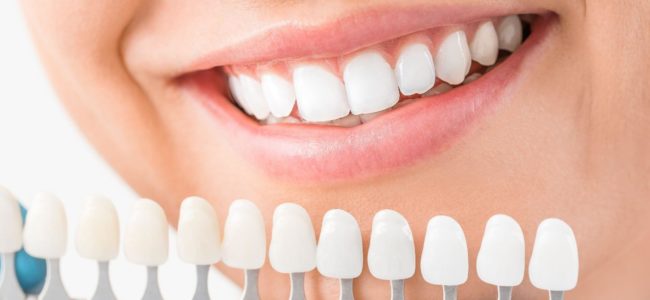What is the Best Whitener for Your Teeth?
Do you look in the mirror and see lackluster teeth staring back at you? It’s not uncommon for teeth to yellow over time – either because of lifestyle factors like smoking, certain medications, or a buildup of dental plaque (to name a few), or more intrinsic factors like dental trauma and tooth development before birth. Whatever the cause, the desire to achieve a whiter smile has been around for a while, dating back to the Ancient Egyptians. According to this Seattle Times article, “The practice of teeth-whitening began around 4,000 years ago with the ancient Egyptians, who created a whitening paste using ground pumice stone mixed in wine vinegar. White teeth were a mark of beauty and a sign of wealth.”
Fast forward and not much has changed in the 21st-century. Author of the book, “How Not to Look Old,” Charla Krupp says, “In excess of 100 million Americans brighten their teeth using different methods; spending $15 billion in 2010.” The process of “whitening” to make teeth look whiter is a huge industry with treatments ranging from dental in-office visits to at-home treatments that can be purchased at your local pharmacy.
But first, before we dive into the different types of whitening treatment, let’s first discuss the two different types of staining to help us understand how to reverse it.
Why Do Teeth Discolor?
According to the American Dental Association, tooth enamel comes in a variety of shades. As time goes on, tooth enamel can stain or discolor. This discoloration can be categorized as intrinsic (staining during tooth development) or extrinsic (due to environmental factors).
The ADA says the following are culprits for yellowing teeth:
- Genetics
- Aging
- Injury to the teeth
- Illness
- Medicines
- Smoking
- Stain-causing food and drinks
- Too much fluoride during the development of teeth
Types of Whitening Treatment
Based on the type of staining (and reason for it), your dentist will prescribe the best whitening treatment. There are dentist-supervised whitening treatments and products available over-the-counter. The ADA says, “Bleaching compounds in over-the-counter whitening products are peroxide-based and typically contain carbamide peroxide or hydrogen peroxide at lower concentrations than in-office or dentist-prescribed, at-home bleaching techniques. A variety of OTC options are available with products that include toothpastes, whitening strips, and gels painted directly on teeth or delivered in trays.” How do you know what to look for? The ADA suggests looking for products stamped with the ADA Seal of Acceptance (meaning the products have met the requirements for safety and effectiveness).
Examples of products available through the dentist may include custom-made trays for whitening gels. This process may require your dentist or hygienist to use light to speed up and enhance the process. The ADA says, “Another in-office bleaching procedure, known as “power bleaching,” uses concentrated solutions of hydrogen peroxide in water (with or without light activation), which may be applied for up to 30 minutes.”
So, what is the best whitening treatment? You’ll have to ask your dentist. It’s very important for a dentist to take in the patient’s lifestyle and dental health when considering a whitening treatment (whitening is not advisable for everyone). The good news – there are a number of affordable options to achieve a brighter smile. Talk to your dentist about what is right for you.
